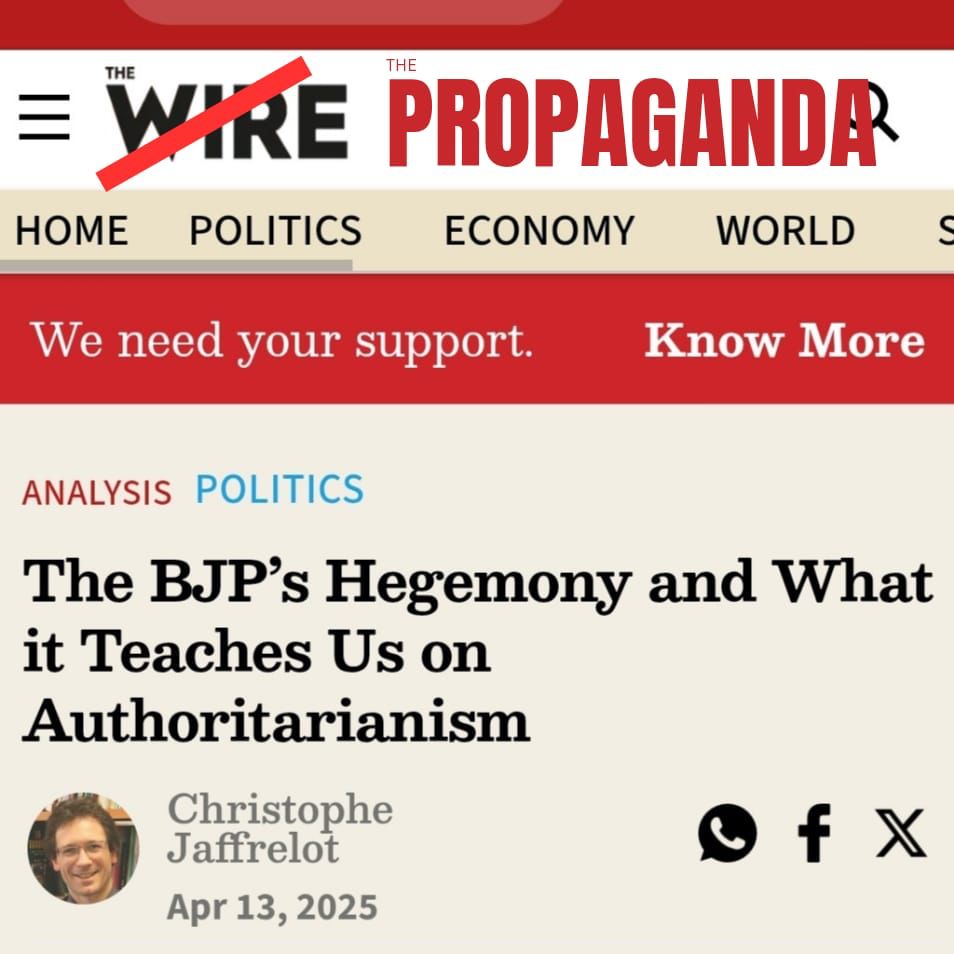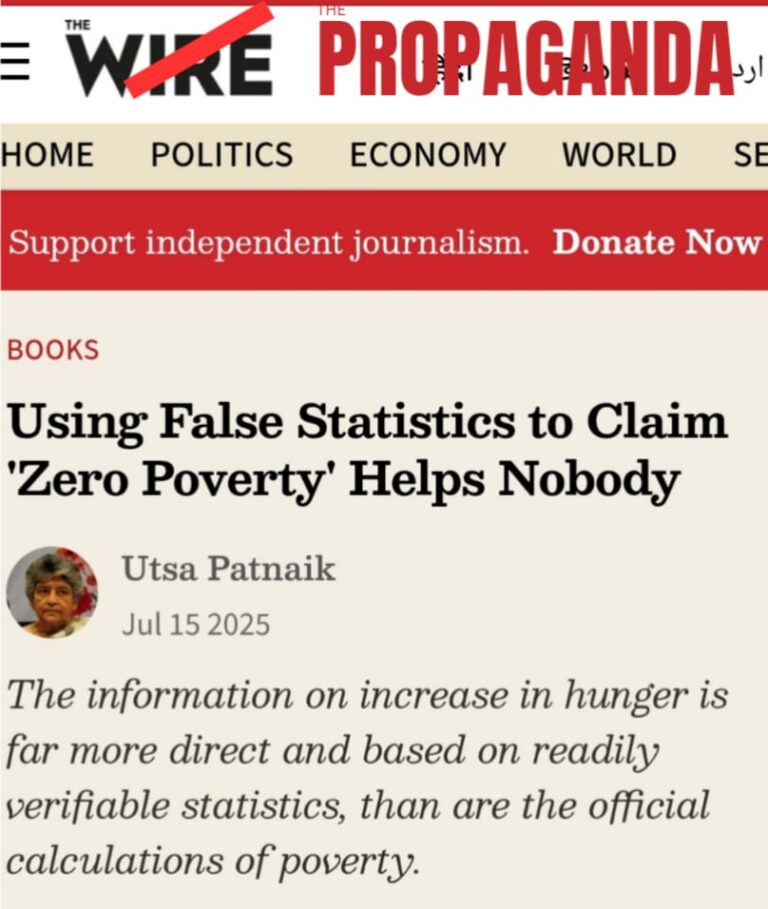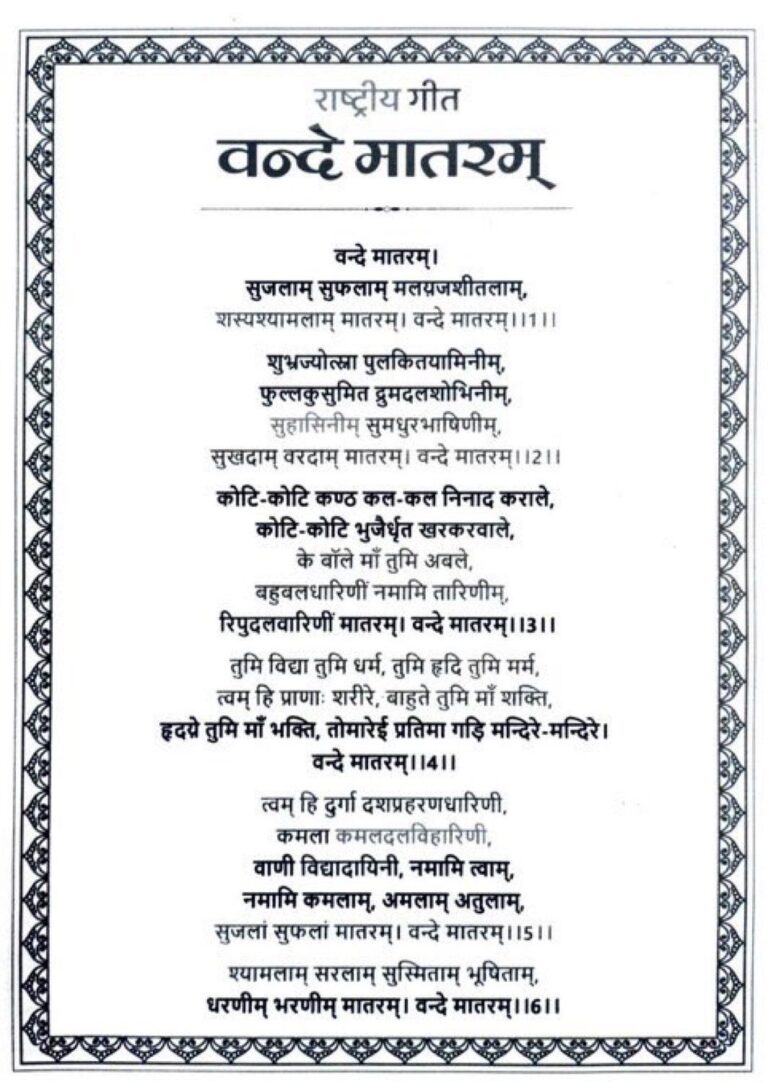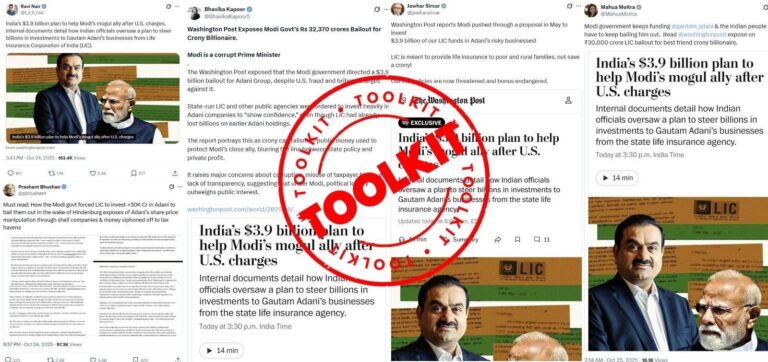
Introduction: When Elites Lose Control, They Call It Fascism
When The Wire publishes a piece titled “India’s Authoritarian Democracy: Modi’s One-Man Show Is Hurting Institutions and Democracy Itself,” you already know what’s coming: a ritual mourning ceremony hosted by the old guard of Lutyens’ Delhi, furious that a poor, OBC man has taken their power away—and worse, hasn’t returned it.
Christophe Jaffrelot and James Manor offer no new analysis—only tired tropes dressed up in pseudo-academic outrage. They ignore Modi’s three consecutive democratic mandates, the working of institutions, and the scale of delivery in governance—because it doesn’t fit their curated victimhood narrative.
Let’s dismantle their arguments, brick by biased brick..
1. “Authoritarian One-Man Show”? Try a Three-Time Democratic Mandate
Narendra Modi is now the first Prime Minister since Nehru to win three consecutive general elections:
This isn’t authoritarianism—it’s democratic endorsement..
Additionally, BJP stormed to power in Maharashtra and Haryana in 2024 and won Delhi in 2025, breaking decades-old narratives and power cliques..
2. Institutions Haven’t Collapsed—They’ve Been Reclaimed for the People
The authors complain about institutional erosion. Let’s unpack their paranoia:
.
3. Modi Is Not the System. He’s What the System Never Allowed Before.
What enrages the Jaffrelots of the world is simple: Modi didn’t rise through elite-approved ladders.
He is:
He dismantled entitlement politics and nepotism networks, replacing them with delivery-focused governance. That’s why they call him a “threat”—because he made the system work for the people, not for the few..
4. Fulfilled Promises: Manifesto to Mandir, Not Mann Ki Baat
Here’s what Modi promised—and delivered: (Just Few Examples).
Infrastructure Development
1. Highway Expansion: National Highways grew by over 60%, from 91,287 km in 2014 to 146,145 km by 2024, with construction pace rising from 12 km/day to 36.4 km/day.
2. Metro Rail Network: Expanded metro rail services to over 25 cities, up from just 5 in 2014, with projects like the Delhi-Meerut RRTS operational.
3. Airport Growth: Number of operational airports doubled from 74 in 2014 to over 150 by 2025, including privatization of major airports like Delhi and Mumbai.
4. Railway Modernization: Introduced 80 Vande Bharat trains by 2025, with plans for 500 more in the next three years; electrified over 90% of railway tracks.
5. Rural Electrification: Achieved 100% village electrification by 2018 and near-complete household electrification (over 99%) by 2025, providing 24-hour power in cities and 22-hour in villages.
6. Solar Energy: Reached 100 GW of solar power capacity by 2025, meeting the initial renewable energy target set in 2015.
7. Smart Cities Mission: Launched development of 100 smart cities, with significant progress in urban infrastructure like waste management and public transport.
.
Economic and Financial Reforms
8. Goods and Services Tax (GST): Implemented in 2017, unifying 17 indirect taxes into a single tax system, boosting ease of doing business despite initial challenges.
9. Digital India: Facilitated a digital revolution with UPI handling 46% of global real-time digital transactions by 2022; monthly GST collections hit Rs. 1.87 lakh crore in April 2023.
10. Make in India: Attracted FDI worth over $600 billion since 2014, boosting manufacturing in electronics, defense, and mobile phones (e.g., India now exports electronic goods worth $25 billion annually).
11. Jan Dhan Yojana: Opened over 50 crore bank accounts by 2025, ensuring financial inclusion with Rs. 2 lakh crore deposited by beneficiaries.
12. Insolvency and Bankruptcy Code (2016): Recovered over Rs. 6.6 lakh crore in bad loans by 2025, strengthening the banking sector.
13. Economic Growth: India became the fifth-largest economy by 2023, up from 11th in 2014, with a record $770 billion in exports in FY23.
.
Social Welfare and Healthcare
14. Swachh Bharat Mission: Built over 11.72 crore toilets by 2025, reducing open defecation from 60% in 2014 to under 10%; constructed 60 million toilets by 2019 as pledged.
15. Ayushman Bharat: Provided health coverage of Rs. 5 lakh per family to over 50 crore people; 1.5 lakh Health and Wellness Centres operational by 2025.
16. PM Ujjwala Yojana: Distributed over 10 crore free LPG connections by 2025, increasing LPG coverage from 62% in 2016 to 104% in 2022.
17. Housing for All: Constructed over 3 crore houses under PMAY (Pradhan Mantri Awas Yojana) by 2025, with a target of 4 crore by 2029.
18. Tap Water Connections: Provided over 11.8 crore households with tap water under Jal Jeevan Mission by 2025, up from 3.23 crore in 2019.
19. Poverty Reduction: Reduced poverty from 22% in 2014 to below 10% by 2024, with extreme poverty dropping below 1% (per NITI Aayog estimates).
.
Education and Skill Development
20. New Education Policy (NEP) 2020: Overhauled the education system, increasing access with 6.53 lakh new schools and 17.93 lakh youth trained under Skill India by 2025.
21. Higher Education: Increased universities from 723 in 2014 to 1,113 by 2023, with 7 new IITs and 7 new IIMs established.
22. Medical Education: Doubled medical colleges from 387 in 2014 to over 700 by 2025, adding 50,000 MBBS seats.
.
Agriculture and Farmer Welfare
23. PM Kisan Samman Nidhi: Provided Rs. 6,000 annually to over 11 crore farmers since 2019, disbursing Rs. 2.5 lakh crore by 2025.
24. Agriculture Budget: Increased agriculture budget 5.7-fold since 2014, modernizing the sector with eNAM and Kisan Credit Cards.
25. MSP Enhancement: Raised Minimum Support Price (MSP) for crops, though farmer distress persists in some regions.
.
Foreign Policy and Defense
26. Surgical Strikes: Conducted strikes in 2016 (Uri) and 2019 (Balakot), signaling a stronger stance on national security.
27. Global Standing: Strengthened ties with the US, Japan, and Middle East; India hosted G20 Summit in 2023, enhancing its global influence.
28. Defense Modernization: Increased military budget by 11% annually; allowed 49% FDI in defense (74% with tech transfer); procured 36 Rafale jets.
.
Cultural and Religious Milestones
29. Ram Mandir Construction: Facilitated the Supreme Court verdict (2019) and groundbreaking (2020) for the Ram Temple in Ayodhya, completed by 2024.
30. Kashi Vishwanath Corridor: Inaugurated in 2021, easing access and decongesting the temple area in Varanasi.
.
Governance and Policy Reforms
31. Article 370 Abrogation: Revoked special status of Jammu & Kashmir in 2019, integrating it fully into India as two Union Territories.
32. Triple Talaq Ban: Criminalized instant triple talaq in 2019, fulfilling a promise for gender justice.
33. NITI Aayog: Replaced the Planning Commission in 2015 with a more collaborative framework, shifting to 3-year and 15-year plans.
34. North-East Peace: Reduced insurgency through dialogue, with over 9,000 insurgents surrendering since 2014.
.
Women Empowerment
35. Beti Bachao Beti Padhao: Improved child sex ratio from 918 (2014) to 934 (2023); launched in 2015 to promote girl child education and survival.
36. Lakhpati Didi: Empowered 11 lakh women to become “Lakhpati Didis” (earning Rs. 1 lakh annually) by 2025 under the scheme.
.
Miscellaneous
37. Unified Pension Scheme (UPS): Introduced in 2024, ensuring pension security for government employees.
38. COVID-19 Response: Supplied vaccines to over 100 countries; administered over 220 crore doses domestically by 2025.
.
Promises Fulfilled (Based on BJP Manifestos)
1. Article 370 and 35A Abrogation (2014, 2019): Revoked in 2019, fulfilling a decades-long ideological commitment.
2. Ram Mandir (2014, 2019): Facilitated legal and construction processes, completed by 2024.
3. Triple Talaq (2019): Banned in 2019, aligning with the promise of a Uniform Civil Code precursor.
4. One Rank One Pension (OROP)(2014): Implemented in 2015 for military veterans, though some grievances persist.
5. Swachh Bharat (2014): Achieved significant sanitation coverage with over 11 crore toilets built.
6. 100 Smart Cities (2014): Initiated, with ongoing progress in urban development.
7. Make in India (2014): Boosted manufacturing and FDI, making India a mobile manufacturing hub.
8. GST Implementation (2014): Rolled out in 2017, simplifying taxation.
9. Housing for All (2014, 2019): Delivered 3 crore houses, on track for more by 2029.
10. Electrification (2014): Achieved 100% village electrification by 2018, nearing household coverage..
5. “Centralization of Power”? Or Just Decentralization of Benefits
What elitist academics call “centralization” is actually removal of middlemen:
This isn’t central control. This is central vision, local execution..
6. Globally Admired, Domestically Respected
While The Wire frets over “democratic decline,” the world thinks otherwise:
If democracy was really collapsing, why is the world moving closer to India, not away?.
If we can find so much information about what the Modi government has done and why people are voting for him, I’m sure such distinguished authors, with a little more research, could have found the answers.
.
7. The Real Collapse: Elite Ego, Not Indian Democracy
What collapsed is not Parliament or democracy—it’s the Lutyens information cartel.
They are:
Modi’s real crime? Proving that governance doesn’t need them. That a man from Vadnagar could out-govern, out-perform, and outlast every dynast in sight.
.
Modi’s Third Term Is the People’s Response to Your Fear
Jaffrelot and Manor can write think-pieces. The Wire can host panels.
But India has responded:
Democracy isn’t dying. It’s never been louder.
And as for the “one-man show”—he now has three democratic encores..
Author : Sandeep Gandotra, is a serial entrepreneur, startup founder, social media influencer and political analyst with 25 years of overall experience. Tweets at Sandeep Gandotra






